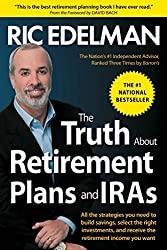
I was trying to sell copies of FIREd by Fifty and SmallIvy Book of Investing: Book1: Investing to Grow Wealthy at a craft fair yesterday. I was not finding any takers. Some of the people who came by were already well into their retirement years, so there is really not that much I can do to help them with my books. The young people who came by glanced at the title, then walked away. Unfortunately, wealth building through stocks is a young person’s game since you need twenty to thirty years to make it work. If you’re elderly and have money, there is information on how to invest in retirement and generate income in both books that would be helpful, but reading most of the book you’d either be saying “I wish I’d done that,” or “I’m glad I did that.” But if you’re young, you’re usually not worrying about saving and investing. One older gentleman said “I wish I’d read this fifty years ago,” to which I replied, “Fifty years ago, you wouldn’t have.” “You’re probably right,” he said, “I was too busy partying to worry about my financial future.
(Note, we are in the Amazon Affiliate program. If you click on a link in this post and buy something from Amazon (even if you buy something different from where the link takes you), The Small Investor will receive a small commission from your purchase. This costs you nothing extra and is the way that we at The Small Investor are repaid for our hard work, bringing you this great content. It is a win-win for both of us since it keeps great advice coming to you (for free) and helps put food on the table for us. If you don’t want to buy something from Amazon or buy a book, how about at least telling your friends and family about our website as a great place to learn about investing and personal finance. Thanks!)
And that is why, despite financial independence being available to most people, very few ever reach that goal. Even if you work full-time at a job just making an average of $15 per hour your whole working life from age 18 until age 70, you’ll have $1.62 million dollars flow through your hands. Just take a portion of that money, starting young, and invest it regularly in stock growth mutual funds and never touch the money, and you’ll easily retire a millionaire. If you start during a job you have in high school it works especially well. The younger you start, the easier it is. And if you start young, you won’t really need to be saving and investing your pay in your fifties and sixties since you’ll already be set for retirement. This means you’ll have lots of extra cash around to pay for things like kid’s colleges, vacations, cars, boats, or whatever you like. But very few people even think about saving for retirement until they’re well into their forties or fifties.
The Prodigal Twins
I’ve started encouraging a couple of twins who I’ve known since they were five to start an IRA. They are now 17 and working a job at a grocery store. An IRA, or individual retirement account, is a little gift from the government that allows individuals to save money either tax-deferred or tax-free. They come in two flavors: Traditional and Roth. A traditional IRA is tax-deferred, meaning you pay no taxes on the money you invest or any of the money you make in the account until you withdraw it at retirement age. With a Roth IRA, you pay taxes on the money you invest, but then pay no taxes on the money you withdraw or the interest it earns.
So how would these little wonders turn a 16 year-old into a millionaire at retirement? Well, if one of the twins were to open an IRA and put $4,000 in it, and then invest entirely in a diversified stock mutual fund like the Vanguard Total Stock Market Fund, it would double in value about every six years. Because it would double eight times between the time they were 16 and 65, every dollar they put into it would be worth $256 when they reached 65. This means that $4,000 would be worth about $1 M at retirement age, even if he invested nothing else after putting the original $4,000 away.
Hey – if you like The Small Investor, help keep it going. Buy a copy of SmallIvy Book of Investing: Book1: Investing to Grow Wealthy, buy one of the products shown, or just click on one of the product links and then browse and buy something else you need from Amazon’s huge collection. The Small Investor will make a small commission each time you buy a product through one of our links.
If he invested in a traditional IRA, he would also save on taxes in the year he put the money into the IRA. If he were in the 10% tax bracket, he would get to keep $400 more of his money right now, so it is like he gets extra money for making the investment. When he withdrew the money from the IRA at age 65, however, he would be taxed on the money he was withdrawing. If he were in the 25% tax bracket during retirement, this would mean that he would actually only get $750,000 after taxes.
If he invested in a Roth IRA, he would not get a tax break now, so he would pay $400 more in taxes now. But when he withdrew money at age 65, he would get to keep all of the money he earned, tax-free. This means he would get to keep the whole $1 M. The only catch is that he would need to find the extra $400 to invest. (In fact, if he invested that extra $400 he got to keep from taxes when he invested in the traditional IRA, putting in $4,400 instead of $4,000, he would end up with the same amount of money after taxes as he would have had with a Roth IRA if his tax rate at retirement were the same as it was when he was working.)


Finding a broker
For the twins, I’m advising they go to Charles Schwab since they offer an IRA account with a $1 minimum investment. This means they could put whatever they can this year, even if it is only $100, an then add to it as they can. If they could get used to putting in $20 per paycheck, that would get them to a little over $1,000 per year. They could also go to Vanguard, but they require a $1,000 minimum to start. Both are great companies with a wide selection of funds to choose from for investments.
Filling out the paperwork and opening the account only takes 15 minutes or so online. Because they are minors, the twins would need to have a parent be a custodian on the account until they turn 18. After opening the account, they would just need to send in a check or send money from a bank account electronically, then choose investments. At Schwab, I would start with the Schwab Total Stock Market Index Fund (SWTSX). At Vanguard, I would buy the Vanguard Total Stock Market Index Fund if I had the minimum $3000 to invest, otherwise I would choose the 2065 Target Date Retirement Fund which only has a $1000 minimum.

Other things to know about IRAs
So what else do you need to know about IRAs? Well, there are some important rules:
- You must have earned income equal to or exceeding the money you put into the IRA during the year you put the money in. This means you need to make at least $4,000 from a job or from running a business in 2018 if you want to put $4,000 in an IRA this year.
- Right now you can put in up to $5,500 per year. If you were to put $5,500 away each year between age 16 and age 35, you would be absolutely set for retirement, no matter what else you did financially. (Lone exception, you must not touch the money in the IRA and it must stay invested in a diversified stock portfolio your whole working life.
- If you take the money out early (before retirement age), you’ll pay a penalty plus you’ll need to pay taxes on the money. (Actually, there are a couple of exceptions with the Roth IRA, but why would you want to raid your retirement funds? Just stay invested.)
- With a traditional IRA, you’ll be forced to start taking the money out when you’re about 70 1/2 years old, so you may need to pay some hefty taxes then, especially if you invested a lot more than the original $4,000 and have several million dollars in the account. With a Roth IRA, there is no need requirement to take the money out ever, so you could let it grow for another 30 years and leave it all to your heirs, if you wished.
- While the person who owns the IRA must have earned at least as much income in the year they make the contribution as they contribute, there is nothing stopping someone else from gifting money to them to help encourage them to contribute to the IRA. A parent, for example, can offer to match their contribution as an incentive to put money away. Call it a “401 Dad.” So, for example Glenn makes $5,000 at his job, invests $4000 of it into his IRA, then his dad gifts him $2000 that he can spend as desired, so it’s like he only put $2000 away.
Will they listen?
Will they take my advice? Probably not. When you’re 17, you’re thinking about gas money and girls, not saving for retirement. When you’re in your twenties, it’s houses and cars. When you’re in your thirties and forties, it’s kids and vacations. While it is actually fairly easy to become financially independent and ready for retirement, even retiring early in your fifties if you follow the strategies I outline in FIREd by Fifty, few people do because there is always something else they’re spending their money on that keeps them from saving and investing. So, most everyone could become a millionaire, but very few will.
Have a burning investing question you’d like answered? Please send to [email protected] or leave in a comment.
Follow on Twitter to get news about new articles. @SmallIvy_SI
Disclaimer: This blog is not meant to give financial planning or tax advice. It gives general information on investment strategy, picking stocks, and generally managing money to build wealth. It is not a solicitation to buy or sell stocks or any security. Financial planning advice should be sought from a certified financial planner, which the author is not. Tax advice should be sought from a CPA. All investments involve risk and the reader as urged to consider risks carefully and seek the advice of experts if needed before investing.
